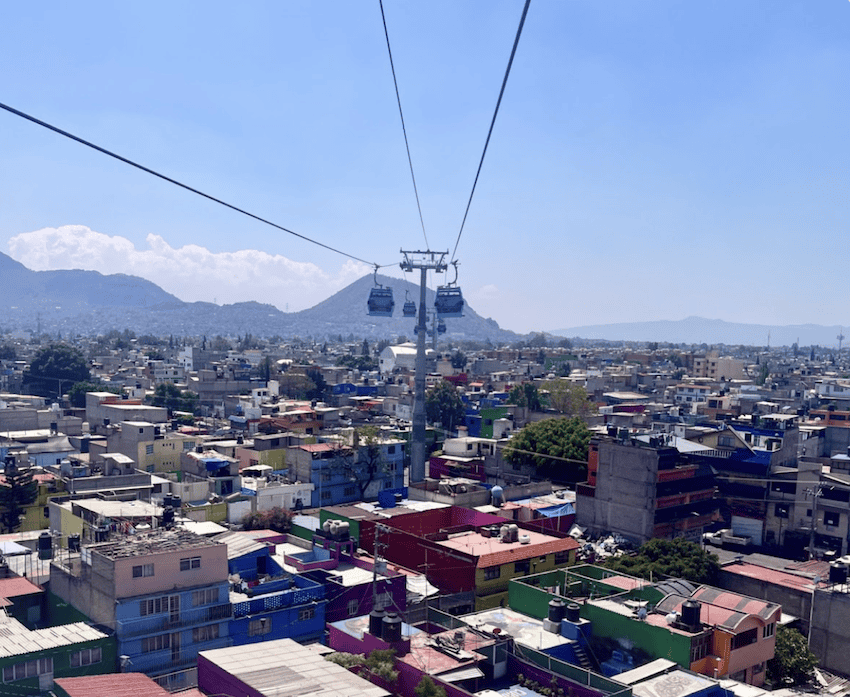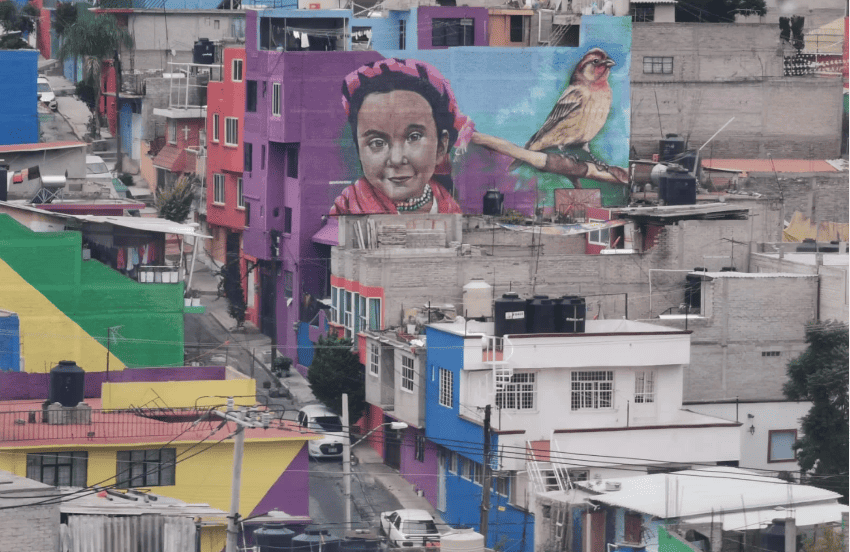What do San Francisco, Medellin, Tbilisi and Mexico City all have in common? Whilst each unique in its engineering, all of these cities are home to a cable car transportation system.
In Latin America specifically, cable cars fly riders above the traffic they are looking to avoid and were constructed in part “to establish connections between isolated low-income neighborhoods and city centers,” according to Morten Flesse and Bernhard Friedrich in their study “Are We Taking Off? A Critical Review of Urban Aerial Cable Cars as an Integrated Part of Sustainable Transport”. This is in sharp contrast with the majority of cable cars in Europe, which are mainly meant to serve tourists or skiers.

Who constructed the first cable car for transportation?
Medellin was the first city in the world to introduce aerial transport in 2004 with much success. Even the World Bank commended the effort, citing increased access to job opportunities and other growth opportunities. The positive benefits that arose from Colombia’s leap of faith, combined with the relatively fast and affordable construction, encouraged more cities to implement similar systems, like Guayaquil, Ecuador and Santiago, Chile.
In 2021, Mexico City followed suit and unveiled the Cablebús, a campaign promise delivered by Mexico City’s mayor Claudia Sheinbaum. The first of two functioning lines was constructed by Mexico’s Gami in collaboration with Doppelmayr Mexico, an Austrian company that has installed more than 15,000 cable car systems worldwide. Cablebús Line 2 was built under a partnership between Mexico’s Alfa Proveedores y Contratistas S.A. de C.V. and Italian company Leitner Spa, which has been manufacturing cable cars since 1888.
How does Mexico City’s Cablebús work?
The Cablebús consists of two lines, one which runs in the northern part of the city and the other in the southeastern part.
Line 1 connects Indio Verdes (also on Metro Line 3) to Cuautepec, a route which has traditionally relied on overcrowded buses to get residents to the Metro lines that will take them to the center of Mexico City. María Juárez told El Financiero in July 2021, “It’s hard to get from here to Indios Verdes, the mini-buses are always full by 5 or 6 in the morning and it’s impossible to board and get to the metro.” Now, with the Cablebús, she can forgo the minibus entirely and shave minutes, if not hours, off her journey.

Line 2 links Santa Marta to Iztapalapa, whose 1.8 million inhabitants make it the most populated borough in Mexico City. Its steep hills make it one of the most arduous to travel by road, but with the Cablebús, residents can fly above them at a much faster pace. Line 2 alone carries up to 120,000 people per day and reduces travel time from 90 minutes to 36 minutes — critical for getting around in a city ranking #13 in Tomtom’s worst Traffic Index of worldwide city centers in 2023 (up from #1 in 2017).
What are some fun facts about the Cablebús?
- At 10.6 km, it’s the longest public cable car in the world and was included in the Guinness Book of World Records in August 2021.
- Unlike Medellin and La Paz’s state-run systems, Mexico City’s cable car works under a public-private partnership model. A 30-year concession contract including the system’s design, construction, operation, and maintenance is to be repaid through fare revenues by the operator.
- It’s better for the environment. Mexico’s City’s transportation system has relied heavily on fossil fuels to function, but with the solar-powered gondola network comes a sustainable alternative. It has also reduced air pollution and traffic congestion.
- It has turned boroughs like Iztapalapa into a work of art! More than 3,000 rooftops are covered in brightly-colored murals, as well as select gondolas and stations.
- There are plans to connect all four sections of Chapultepec Park that have yet to come to fruition, with some experts citing environmental concerns.
How can I ride the CableBús?
If you’re interested in riding the Cablebús for the views, Line 2 is the longer and more scenic of the routes. You can take the subway to either end and ride the cable car to the other. Metro Line 8 takes you to Constitución de 1917, and Metro Line A takes you to Santa Marta. Another option is to take a shared car service to the station. The Cablebús ride is about 30-40 minutes.
If you plan to explore the neighborhoods, we recommend going with a local guide. Iztapalapa is not a safe area and should not be explored alone or at night. Consider signing up for a tour, like Warrior Experience’s CableCar Tour, and read about my experience here.

What’s it like to ride the Cablebús?
The most challenging part of taking the Cablebús is getting to the station. The ride itself is smooth and easy. From here, staff have figured out how to streamline the constant flow of users to minimize wait times. The cars themselves are quite clean and fellow riders are always polite.
But you’re not here for the ride itself. You’re here for the views. And the views are all-encompassing. We know that Mexico City is vast but it’s unbelievable to see its expanse from up here. Imagine riding in a glass box over an open-air museum of rooftops adorned with murals, green palm trees, and a kaleidoscope of casitas that dot the hilly landscape. Down below are street vendors pushing their carts, lines of laundry billowing in the wind, dogs barking wildly at the cable car as it passes above them. The scene is so real, so raw, so Mexico. And I highly recommend it.
Bethany Platanella is a travel planner and lifestyle writer based in Mexico City. She lives for the dopamine hit that comes directly after booking a plane ticket, exploring local markets, practicing yoga, and munching on fresh tortillas. Sign up to receive her Sunday Love Letters in your inbox, peruse her blog, or follow her on Instagram.
